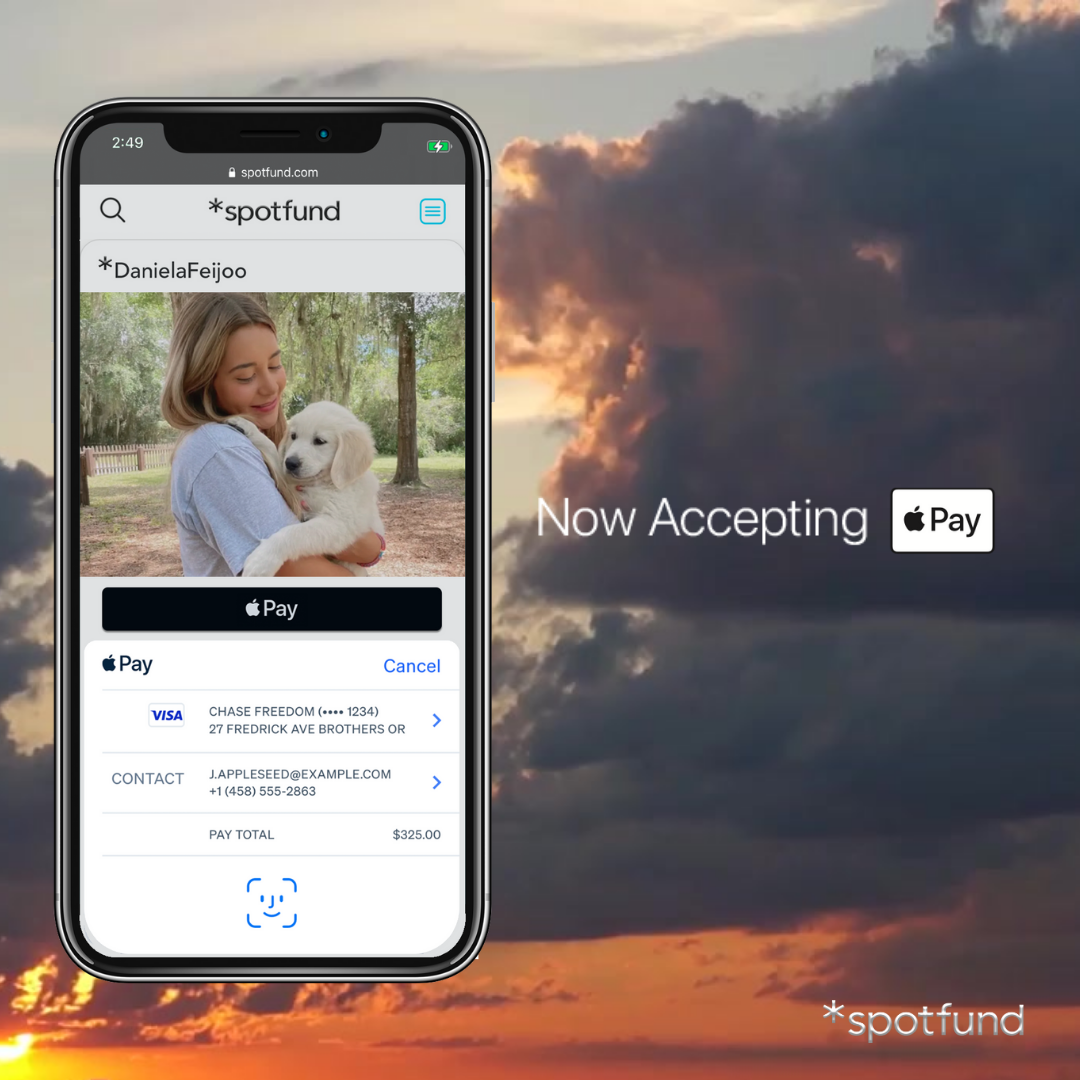A 5K fundraiser is a community-driven charity event where participants run or walk a span of five kilometers (approximately 3.1 miles) to raise funds for a notable cause or charity. This unique blend of physical activity and philanthropy draws more participants, encompassing all ages and fitness levels, to unite under a shared purpose.
With meticulous planning, including promoting your 5K and a well-thought-out days of the event schedule, a 5K charity run fundraiser transcends being merely a race. It transforms into a compelling symbol of hope, rallying the community towards a collective goal. Alongside the crucial task of raising funds, such an event also amplifies awareness on vital subjects, fortifies bonds among race participants, sponsors, and beneficiaries, and augments a spirit of togetherness. In its aftermath, the impact of a well-executed 5K lingers, driving positive transformations that resonate long after the event concludes.

Step 1: Establishing the Purpose and Goals
Defining the Cause or Charity
Before diving into the logistics of organizing a 5K charity-run fundraiser, it's paramount to define the heart of the event: the cause or charity. This could range from medical research, educational initiatives, and disaster relief, to local community development. When choosing your cause:
-
Research thoroughly: Ensure that the charity or cause is credible, has a proven track record, and aligns with the values you aim to promote. If partnering with a non-profit organization, check for transparency in their operations and financials.
-
Align with community interests: A cause that resonates with your local community is likely to garner more support and participation. Consider local needs, recent events, or ongoing issues that touch the hearts of potential participants.
-
Personal connection: If the cause is personal to you or your organizing team, share that story. Authenticity and passion can inspire others to join your mission with similar fervor.
Setting Financial Targets
To track the success of your fundraiser, set clear financial targets:
-
Realistic Fundraising Goals: Base your financial goals on tangible factors, such as past event results, current community interest, and the scope of your promotional efforts.
-
Tiered Targets: Create a base goal, a stretch goal, and a dream goal. This allows for a sense of accomplishment at different stages and can motivate participants to push even harder as milestones are reached.
-
Track and Update: Use your online fundraising platform and other tracking methods to provide real-time updates on funds raised. Celebrate small victories along the way to maintain enthusiasm.
Understanding the Benefits of the Event Beyond Just Funds
While the primary goal of a charity run fundraiser is to raise money, it's essential to recognize and harness the broader benefits:
-
Awareness: This event can spotlight a specific issue or need, educating participants and spectators. It offers a platform to share stories, statistics, and solutions related to the cause.
-
Community Engagement: 5K charity race fundraisers are a catalyst for community unity. Neighbors meet, families bond, and disparate groups collaborate. This engenders a sense of belonging and shared purpose.
-
Promotion of Health and Well-being: By its very nature, a 5K charity run promotes physical activity. It can inspire individuals to take up healthier habits, train for the event, and embrace a more active lifestyle.
-
Networking and Partnerships: Such running events often attract local businesses, organizations, and influencers. It's an opportunity to forge new partnerships that can be beneficial in future endeavors or even beyond the realm of fundraising.

Step 2: Setting Up an Online Fundraising Platform
In our increasingly connected world, harnessing the power of digital platforms is not just beneficial, but often essential for a successful fundraiser. Let's explore how to effectively set up and utilize an online fundraising platform for your 5K fundraising events.
Researching and Selecting the Right Platform
Choosing the right online fundraising platform is crucial. Here's how to go about it:
-
Features and Usability: Ensure the platform offers tools you need, like real-time donation tracking, automated thank-you messages, and integration with social media.
-
Fees and Costs: While many platforms charge a fee for donations, rates vary. Choose one that offers the best balance between cost and features.
-
Reputation: Opt for platforms with a proven track record of security, reliability, and positive user reviews.
-
Integration Capabilities: Consider platforms that can integrate with other tools or software you may be using for the event.
*spotfund – The Ideal Peer-to-Peer Fundraising Platform
In today's digital age, leveraging online platforms for fundraising is not just a luxury but a necessity. If you're exploring the vast landscape of online fundraising platforms, let me point you toward a standout option: *spotfund.
-
Zero Platform Fee: One of *spotfund's most commendable features is its lack of platform fees. This means that a larger chunk of the funds you raise directly benefits your cause, ensuring that your efforts yield maximum impact.
-
Seamless Social Media Integration: In an era where social media reigns supreme, *spotfund astutely integrates with various platforms. This facilitates broader reach, better engagement, and increased visibility, significantly boosting your fundraising campaign's success rate.
-
Real-time Tracking: *spotfund offers dynamic real-time tracking, allowing fundraisers and donors alike to monitor the progress of campaigns. This not only adds a layer of transparency but also creates a sense of excitement and urgency, encouraging more donations.
-
Swift Withdrawals: Once you've reached your fundraising goal, *spotfund ensures that accessing your funds is a breezy experience. Their quick withdrawal feature is efficient and hassle-free, so you can channel your energies and resources towards your cause without delay.
-
Endorsement by Renowned Nonprofits: The trust and reliability of a platform are often gauged by its clientele. *spotfund proudly boasts associations with some of the most reputable nonprofits in the industry. Their endorsement speaks volumes about the platform's efficacy and credibility.
-
Recurring Donation Option: *spotfund facilitates the setting up of recurring donations, ensuring a steady flow of funds and aiding in sustained fundraising efforts for long-term projects.
In light of your 5K fundraising endeavors, *spotfund emerges as a clear frontrunner among online fundraising platforms. Whether you're an experienced event organizer or just venturing into the realm of charity run fundraisers, *spotfund offers a tailored experience that aligns seamlessly with your goals.
Ready to elevate your fundraising efforts? Create a fundraising campaign with *spotfund now and witness firsthand the unparalleled benefits it brings to your 5K fundraiser.

Customizing Your Fundraiser Page for Maximum Engagement
Your fundraiser page is the digital face of your cause. Here's how to make it engaging:
-
Telling a Story: Share the narrative behind your cause, using photos, videos, and testimonials. A compelling story can move people to donate.
-
Branding: Ensure consistent use of logos, color schemes, and fonts to create a professional and recognizable look.
-
Clear Call-to-Action: Position donation CTA buttons prominently and ensure the donation process is straightforward.
-
Updates: Regularly update the page with progress towards your goal, event news, and acknowledgment of donors.
Utilizing Platform Features
Maximize your platform's potential:
-
Real-time Donation Tracking: Use this feature to provide instant feedback to donors and motivate others by showing progress.
-
Social Sharing Tools: Enable easy sharing options for supporters to spread the word on their social networks.
-
Interactive Elements: Use features like donor comment sections, leaderboards, or fundraising challenges to boost engagement.
-
Automated Communications: Set up automated thank-you emails, reminders, and event updates to keep donors engaged.
Integrating Offline and Online Fundraising Efforts
Blending the physical and digital aspects of your fundraiser can amplify results:
-
Promote the Digital: At your offline event, consistently direct attendees to the online platform for donations, sharing, or further information.
-
QR Codes: Utilize QR codes on event materials, leading directly to your online fundraising page.
-
Offline Donations: Ensure a system to update online totals with offline donation events, so your progress is accurately reflected across both arenas.
-
Engage Across All Platforms: Encourage participants to share their offline participation (like training runs or team meetups) online using a dedicated event hashtag.

Step 3: Planning the Running Event
Embarking on the journey of organizing a 5K charity run fundraising involves meticulous planning. Setting a solid foundation in the initial stages can greatly streamline the process and enhance the event's success.
Selecting a Date and Time
Choosing the right date and time is pivotal for ensuring maximum attendance:
-
Seasonal Considerations: Depending on your race location, certain times of the year might be more favorable for outdoor events. Avoid peak summer or winter months if they are particularly harsh.
-
Community Calendar: Check your community's calendar for other major events, holidays, or local observances to avoid clashes.
-
Day of the Week: Weekends typically garner higher attendance, but consider local norms and preferences.
-
Time of Day: Early mornings are popular for 5K runs to take advantage of cooler temperatures and minimal traffic.
Choosing a Suitable Location
Selecting the right spot for your 5K fundraising is instrumental to the event's success. The location sets the stage for a memorable experience, ensuring participants' enjoyment and safety.
-
Considering Terrain: Choose flat terrains for inclusivity. If considering challenging routes with inclines, communicate this clearly. Ensure the terrain is stable, avoiding muddy or flood-prone areas.
-
Evaluating Accessibility: Ensure the venue is easily accessible, whether by car, transit, or walking. Address parking—arrange alternatives is limited. For lesser-known locations, provide clear signage or directions.
-
Checking Permits and Permissions: Before confirming a location, check with local authorities for required permits. If using private land, get the owner's consent. Be aware of regulations like noise or crowd controls that could affect event logistics.
Drafting a Timeline of Preparations
A structured timeline can be your roadmap to timely and efficient event organization:
-
Start Early: Begin preparations several months in advance, allocating ample time for unforeseen challenges.
-
Major Milestones: Outline major tasks such as securing sponsorships, finalizing the location, launching online fundraising, and promoting your event.
-
Weekly or Monthly Breakdown: Detail specific tasks for each week or month leading up to the event. This can include deadlines for vendor contracts, volunteer recruitment, or marketing campaigns.
-
Final Weeks: As the event date approaches, have a detailed day-by-day breakdown of tasks, ensuring nothing slips through the cracks.
-
Post-Event: Allocate time after the event for tasks like financial reconciliation, thanking participants, and gathering feedback.

Step 4: Assembling a Reliable Team
Behind every successful fundraiser is a dedicated and cohesive team working tirelessly to bring the vision to life. Assembling the right group of individuals and fostering a collaborative environment is essential.
Identifying Roles and Responsibilities
Clear delineation of roles ensures accountability and efficiency:
-
Event Coordinator: This person oversees the entire event, making key decisions and ensuring that all parts are working in tandem.
-
Logistics Manager: Tasked with handling all logistical aspects, including route planning, safety measures, and coordination with vendors.
-
Marketing and Public Relations Lead: Manages promotion, media relations, and online presence.
-
Financial Coordinator: Oversees budgeting, tracks event expenses, and revenues, and ensures financial targets are met.
-
Volunteer Manager: Coordinates volunteer recruitment, training, and allocation.
-
Sponsorship and Partnerships Lead: Focuses on attracting and liaising with sponsors and partners.
-
Digital Coordinator: Manages the online fundraising platform, social media posts updates, and any other digital components.
Recruiting Volunteers
Volunteers are the backbone of any large-scale event, offering invaluable support:
-
Tap into Local Networks: Approach schools, colleges, community centers, and local businesses to seek enthusiastic volunteers.
-
Clarify Expectations: Clearly define the roles, responsibilities, and time commitments for volunteers from the outset.
-
Training: Ensure volunteers are well-trained, especially if they're manning crucial roles like route marshaling, first aid, or registration desks.
-
Appreciation: Recognize and appreciate volunteers’ efforts, both during and after the event. This can foster loyalty and a willingness to volunteer for future events.
Establishing Communication Channels
Effective communication is pivotal to coordinating efforts and addressing issues promptly:
-
Regular Meetings: Hold consistent team meetings to review progress, discuss challenges, and make necessary adjustments.
-
Digital Tools: Use communication platforms like Slack, Teams, or WhatsApp groups for real-time coordination.
-
Centralized Documentation: Use cloud storage solutions like Google Drive or Dropbox to keep essential documents accessible to all team members.
-
Emergency Protocols: Have a clear protocol for urgent situations. Everyone should know who to contact and how especially on the day of the event.
-
Feedback Loops: Create a system for team members to provide feedback or voice concerns. This will help in continuous improvement and problem-solving.

Step 5: Budgeting and Finance
Financial prudence is fundamental to the success of a charity race fundraiser. Organizing such an event involves numerous expenditures, and it's crucial to manage funds judiciously to ensure the primary goal – supporting your cause – is met effectively.
Estimating Costs
Precise cost evaluations are pivotal in budgeting effectively, ensuring the judicious allocation of funds, and making sound financial choices.
-
Venue and Licensing Fees: If your event is not set on public land, there may be costs for using the chosen location, such as rental fees or charges. Additionally, factor in expenses linked to procuring necessary permits or licenses for the event.
-
Rental Equipment Needs: Your event might necessitate various equipment, ranging from race timing and public address systems to tents, chairs, and barricades. It's also essential to consider supplementary gear, like first aid kits in aid stations or portable restrooms, especially if your venue lacks these amenities.
-
Marketing Expenses: Marketing endeavors can be diverse and span from digital campaigns to tangible materials. This category may include expenses for digital advertising, posters, banners, and other promotional paraphernalia. If you're collaborating with professionals for design work, include their fees in your estimates.
-
Refreshments: Hydration stands as a crucial element for runners. Thus, setting up water stations at strategic intervals is imperative. Budget for water supplies, cups, and dispensers. If you're looking to treat participants post-race, add in costs for snacks such as fruits, energy bars, or other beverages.
Identifying Potential Sources of Funds
Your fundraiser can benefit from multiple revenue streams:
-
Participant Registration Fees: Determine entry fees for participants, considering what's reasonable for your community and what other similar events charge.
-
Sponsorships: Partner with local businesses. In return for financial support, offer them visibility through logos on event materials, banners, or digital promotions.
-
Donations: Apart from the main fundraising, there will be individuals or organizations willing to donate without participating. Ensure they have easy avenues to do so.
-
Merchandise Sales: Consider selling event-themed merchandise like T-shirts, caps, or wristbands. Not only does this generate revenue, but it also boosts event visibility.
-
Concession Stands: If the event attracts spectators, setting up food or merchandise stalls can be an additional source of funds.
Setting Up a Transparent Financial Tracking System
Transparency builds trust, especially when funds are being raised for a cause:
-
Use Digital Tools: Accounting software or apps like QuickBooks or Excel can help track income and expenditures in real-time.
-
Regular Audits: Periodically review the finances to ensure accuracy and to catch any discrepancies early on.
-
Transparency Reports: Consider sharing financial overviews with key stakeholders or even the broader community. This demonstrates integrity and can bolster trust for future fundraisers.
-
Emergency Fund: Set aside a small portion of the budget for unforeseen expenses. This cushion can be invaluable when unexpected costs arise.

Step 6: Logistics and Operations
Smooth logistics and meticulous operational planning are the backbone of a successful charity-run fundraiser. The race day's fluidity directly impacts participants' experience, and ensuring everything runs like clockwork is paramount.
Designing the Race Route
Crafting a memorable and safe route requires careful consideration:
-
Scenic Appeal: Choose routes that offer picturesque views, whether it's through a park, alongside a waterfront, or through historic parts of town.
-
Safety: Ensure the path avoids high-traffic areas and has adequate pedestrian pathways or lanes for runners.
-
Terrain: A mix of terrains can be fun, but be cautious of overly challenging or potentially unsafe segments.
-
Start/Finish Line: Ideally, having a common start and finish point simplifies logistics, especially in terms of participant gatherings and facilities.
Organizing Registration and Check-in Processes
A seamless registration process and check-in experience set the tone for the event:
-
Online Registration: Use your online fundraising platform or other event registration tools to facilitate easy sign-ups or contribute registration forms.
-
Early Bib Collection: Offer participants the chance to collect their race bibs a day or two before the event to reduce race day congestion.
-
Race Day Desks: Have clearly marked desks or stalls for event day registrations and bib collections. Ensure sufficient volunteers are on hand to assist.
-
Digital Check-ins: Consider using QR codes or mobile apps for faster check-in processes.
Arranging for Medical Support and Safety Measures
Ensuring the safety and well-being of participants is of utmost importance:
-
First Aid Stations: Strategically position first aid stations along the route and at the start/finish area. Stock them with essential first aid supplies.
-
Medical Personnel: Have certified medical personnel, such as EMTs, on standby, especially if 5k races have a large turnout.
-
Clear Signage: Use visible markers to indicate route directions, potential hazards, and distances covered.
-
Marshals and Volunteers: Position them along critical junctions to guide runners, manage traffic, and provide assistance if needed.
Coordinating Refreshments and Post-Race Activities
The finish line experience can leave a lasting impression:
-
Hydration Stations: Ensure there are enough water stations along the route and a larger one at the finish line.
-
Snacks and Nutrition: Offer participants light snacks like fruits, energy bars, or drinks to replenish post-race.
-
Entertainment: Consider having a live band, DJ, or entertainment segment to keep the energy high post-race.
-
Acknowledgment and Awards: Recognize top finishers, and notable participants, and celebrate every participant's achievement, perhaps with finisher medals or certificates.
-
Engage Sponsors: If sponsors have set up stalls or experiences, guide participants towards them, ensuring sponsors get the visibility and engagement they were promised.
Organizing a successful 5K running fundraising requires a comprehensive approach, and following these six pivotal steps ensures a seamless execution. From defining your purpose to mastering event logistics, each phase is integral to your event's success. As you embark on this rewarding journey of fundraising, remember that a well-structured plan, coupled with passion and commitment, will set the foundation for a memorable and impactful event.
Achieve a successful event by maximizing your fundraising potential with*spotfund, the free online platform designed especially for events like yours. Create a campaign now!

